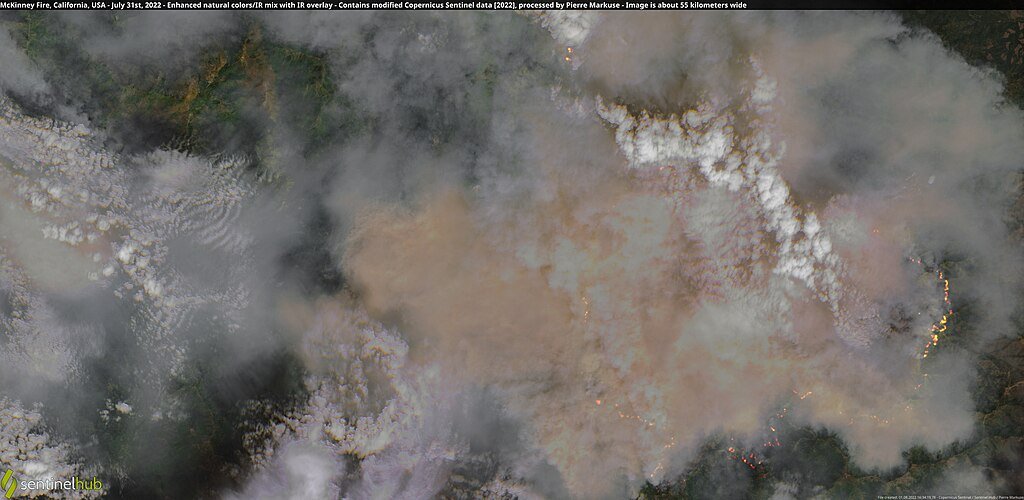Every summer gets hotter, and stories of fires in places like Australia, Greece, and the US hit our news. Fires destroy ecosystems, damage the environment, demolish workplaces, homes, and local infrastructure, and cause the loss of wildlife and the death of animals and people, severely impacting a country's carbon emissions.
However, while burnt homes often get the most media interest, forests are heavily susceptible to fires. But how can fires in places like the Amazon and remote Australia be prevented? The answer lies in technology.
Tools, including satellite imaging, ground-based cameras, drones, and watchtowers, monitor for smoke or flames. Yet, in landscapes prone to rapid tinder-dry conditions, the swiftness with which wildfires propagate means that forest fires must be detected quickly.
German startup Dryad Networks has developed Silvanet, a suite of products that detects wildfires during their smouldering phase (within their first hour or even the first 30 minutes) using highly precise gas sensors that can detect hydrogen, carbon dioxide, and other gases to a parts-per-million (PPM) accuracy.
I recently spoke with CEO and co-founder Carsten Brinkschulte who detailed:
"We need to alert the fire brigades very early on. The fire has to be small enough to extinguish by the time they get to the scene. There's no use alerting them to a fire the size of a football pitch because you can't extinguish that anymore."
The role of technology in early fire detection
Silvanet is a suite of products:
Sensors: Solar-powered sensors with embedded AI measure various gases, temperature, humidity and air pressure. Sensor nodes connect to Silvanet gateways using LoRa, the open standards long-range radio network for IoT (Semtech is one of the company's investors).
The AI of the sensors is continually trained for the specific 'smell' of the target forest on fire. Customers collect samples from the forest floor and send them to Germany, where Dryad trains its AI in the lab.
According to the company,
"Over time, we will collect more and more samples from typical forests in the different parts of the world and will eventually no longer have to train the AI for new deployments as there is only a finite amount of forest types. We expect this to be the case within the first two years of operation."
Mesh gateways: Scalable, distributed LoRaWAN gateways support a wide range of compliant sensors. The gateway enables large-scale deployment of multi-party sensor networks within forests of all types.
Cloud platform: Cloud-based big data tools for analytics, monitoring and alerting.
I've spoken to Brinkschulte a few times, so I was especially keen to learn about the company's progress since our last conversation.
The company is currently in its industrialization and go-to-market phase, manufacturing 30,000 sensors and several 100 gateways. And they are selling a lot of them with demand outstripping quantity.
Brinkschulte notes,
"We're still pretty much the only company doing this professionally, I would have expected competition by now, but I don't know why the Americans are sleeping.
And I hope others will join because I don't think we can single-handedly solve this problem. We need many more companies trying to do similar things."
I wanted to understand why there's a lack of uptake by other startups to develop this kind of tech.
Challenges include establishing communication in dense forests and developing ruggedized hardware that can last two decades without maintenance.
Brinkschulte explained that "the problem is the challenge to establish communications in a forest.
You may be able to do sensors and demonstrate them in the urban environment, but in the depths of the forest, things get really challenging."
Besides connectivity challenges, hardware deployed in a forest resides in steep and inaccessible places. It needs to be cheap, scalable, easily deployed, and ruggedized, with the ability to run for at least 20 years without maintenance.
Of course, leading commercially can only be a good thing for a startup.
Despite these hurdles, Dryad Networks' solution is gaining traction, deployed by resellers across regions like Greece, Spain, Portugal, California, and Canada.
Notably, Dryad's tech was tested in the formidable environment of California's Redwoods, where radio waves are obstructed by towering redwood trees.
The company recently completed a deployment with CalFire in California, where it deployed 400 Silvanet sensors.
Dryad also recently conducted a proof of concept with utility company PG and E in California, which caused over 1,500 wildfires in California, including the state's second-largest wildfire in 2022.
Canada Rail is also trialling Silvarnet this year, Canada has lost 11.5 million hectares due to wildfires, an area equivalent to the entire expanse of forests in Germany.
The ever-present challenge of who pays to protect the environment
Last year the company raised €10.5 million in a Series A funding round in 2022, bringing their funding to €13.9 million. I mention this because when you talk about saving the environment, the question always comes down to who pays.
In an earlier conversation, Brinkschulte predicted private forest owners to be a core client, but this week explained that forestry typically owns patches of forests, as opposed to regions, "and the whole area needs to be protected to make sense."
However, the company is also extending its reach to the wider environment. It plans to work on new products in parallel, such as detecting soil moisture and plant growth, which will increase the appeal for private forestry and plantations.
But until then, utility companies and municipalities have a valuable tool in their battle against the ravages inflicted by wildfires.



Would you like to write the first comment?
Login to post comments